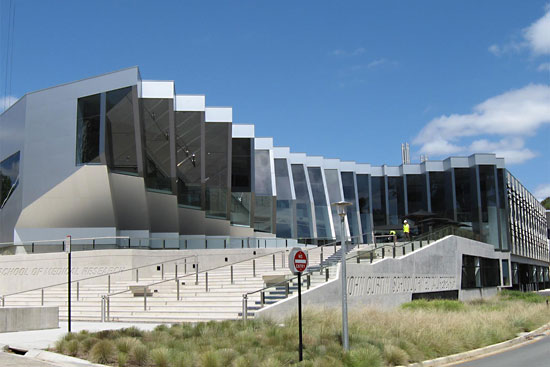ANU: Roo reform necessary to improve animal welfare
Australia needs to overhaul how overabundant kangaroos are managed, rather than letting them starve or be culled as pests, according to an expert from The Australian National University (ANU).
ANU Professor George Wilson argues better management is key to reducing environmental impacts, limiting food waste, improving human and animal welfare and creating more stable kangaroo populations.
He says a stronger kangaroo industry could also bolster the national economy and provide jobs for regional and rural communities.
Professor Wilson and other macropod experts from across Australia have penned a joint statement calling for a national overhaul of the strategies used to manage kangaroos and wallabies that are prone to overpopulation throughout much of Australia where their main predators are controlled.
The statement has been endorsed by 25 ecological, conservation, animal welfare and Aboriginal agencies.
While the researchers argue there are many benefits to improving kangaroo management, they acknowledge the culling and harvesting of these animals is a sensitive subject.
“I am motivated by the welfare of individual animals and seeking the delicate balance of caring for the conservation of populations,” Professor Wilson said.
Professor Wilson and his co-authors are calling for a National Kangaroo Taskforce that would see the Federal Government and the states and territories, private landowners, agriculture and conservation bodies and Indigenous communities join forces to drive kangaroo management reform.
Professor Wilson says there are about 40 million kangaroos on private land but only a small proportion of them are being utilised effectively, opening doors for private landowners to become involved in the kangaroo industry.
“Currently, hundreds of thousands of kangaroos are culled on private land as a form of pest control in order to protect environmental and agricultural production, but an increasing number of carcasses are left in the paddock to rot, which is a huge waste,” Professor Wilson said.
“We want to see private landowners bring in professional shooters to ensure roos are put down humanely.
“Another benefit of employing professionals is they take the carcass back to a chiller where shooter accuracy can be checked and the meat and skins harvested instead of going to waste.”
Professor Wilson is appealing with landowners to view the country’s national icon through a new lens and see the animals as assets rather than pests.
He proposes increasing the value of kangaroo meat to match sheep and cattle prices. This could in turn provide financial incentives for landholders and offer employment for Indigenous communities.
“If the price of kangaroo rises from about $20 a carcass to around $70-$80 or more, then a portion of the money can be fed back to the landowner,” Professor Wilson said.
“Currently landowners don’t benefit from the culling of these roos on their properties. The shooters come to the property and take the kangaroos and the graziers just view this as pest removal.
“Indigenous communities now own significant areas of pastoral land, as they once did, and we hope they too can become involved with this initiative, particularly in South Australia where properties are flooded with kangaroos.
“They have used kangaroo for millennia and the opportunity exists for them to be employed as professional kangaroo shooters in a sustainable harvest.”
Professor Wilson says there are many other benefits to strengthening the country’s kangaroo industry.
“Not only is kangaroo a quality product and a high-protein meat, with low fat and cholesterol, the animals also produce fewer methane emissions compared to sheep and cattle,” he said.
“Because the animals don’t produce as much methane, instead of the graziers seeking to bolster their sheep and cattle numbers after periods of drought, which they are doing, it would make sense for them to be involved in low-emission meat from the kangaroos on their properties and potentially earn carbon credits which can be traded as part of meeting Australia’s climate change objectives.
“Kangaroo leather also has the highest strength-to-weight ratio of any leather and it makes very good running shoes, soccer boots and similar products. So, there are plenty of opportunities to better utilise kangaroos for commercial use considering how many currently aren’t being utilised effectively.”
The researchers say maintaining stable numbers of kangaroos and preventing the subsequent “crashing” of populations is a key priority in order to prevent millions of inhumane deaths during droughts.
According to Professor Wilson, it is estimated about six million kangaroos and wallabies died of starvation during the last drought in Australia.
“It’s not only extremely distressing for the kangaroos that get bogged in limited water supplies during droughts, but it also has a huge mental health toll for the graziers who have to deal with these starving kangaroos that are on the brink of death,” he said.

